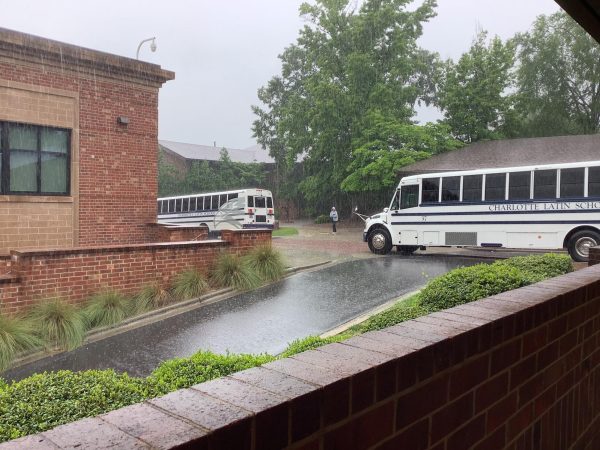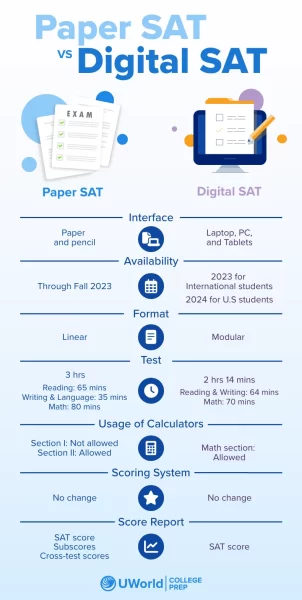A Chance for Everyone in Charlotte Latin’s Art Program
Charlotte Latin is a school of many strengths and extracurricular activities, but the visual arts program is something that the school holds close to its heart. The program is taught unlike most art classes in the country. Every student receives individualized information rather than the teacher demonstrating a specific technique or project to the entire class. All students have the opportunity to think of their own projects, and they have the freedom to pursue them in any medium. The program’s positive impact on participants teaches them to think differently than the standard, curriculum-based art class.
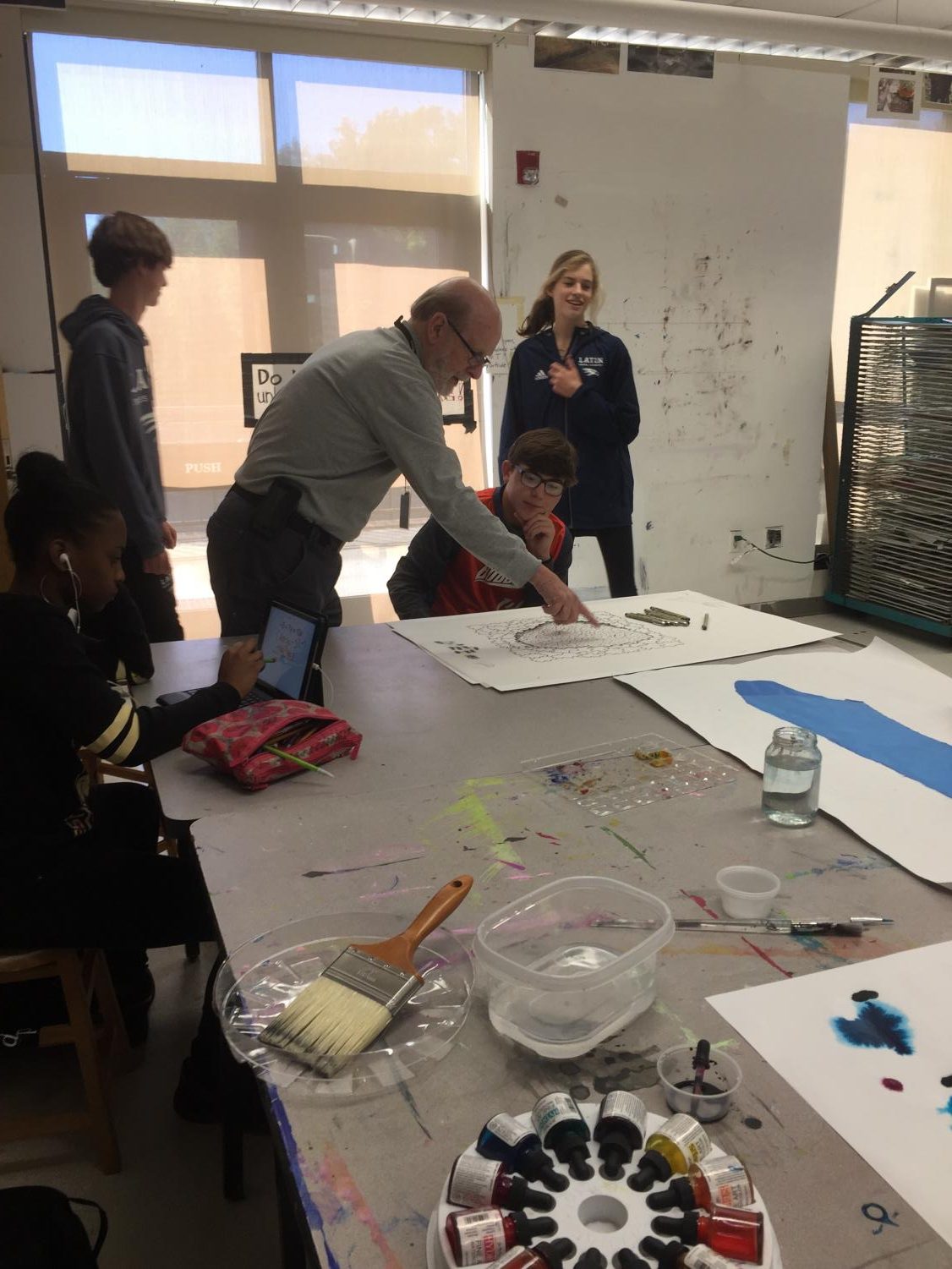
Retired art teacher Chip Martin helps Wilson Thrift ’22 with the details of his upcoming project.
Chip Martin, an original teacher who helped begin Latin’s art program, said the structure, “came about out of necessity. I knew we couldn’t have a strong program if we couldn’t get people who liked art into the program.” When the program started there were 54 students. With Martin’s help, they enrolled six more students. Martin explained when Latin was a smaller school every level of art could only be offered during a restricted number of class times a day, so “a lot of the time if a kid needed Art II during third period but there was not Art II offered during third period, they couldn’t take art.”
If there was a student who really wanted to take art but couldn’t fit it into his or her schedule, Martin would often take the student in, “as an independent study.”Martin said, “After about a year and a half of teaching students independently, half of my students were independent studies,” Martin said. Without teaching meeting their students’ needs in this way, the program couldn’t be as successful. Martin then decided, “if that was gonna be the only way we could be available to all kids in the school, then we would have to structure the teaching methods around individualized instruction.” That’s where the idea of teaching art by concept started.
Soon enough, Martin stopped teaching a one-on-one private lesson, but he developed a system where students of every level could share the classroom and all be working on their own projects. Martin said that, “the enrollment more than doubled in two years, and by the third year Latin went from being the proverbial private school doorstop in Scholastic Awards, to dominating the competition.” Each piece of work that was entered was completely different from the next, whereas other schools might have thirty or so paintings of the same scene. The studio setting was a drastic change from the old system, but overall the students are happier and more successful since the change has been made.
Will Thomason, an art teacher at Latin for 23 years explained that, “there’s no other program like us that teaches art individually.” The individuality of the system is not only good for the art competitions the school enters, but it has become such a significant part of the students’ lives.
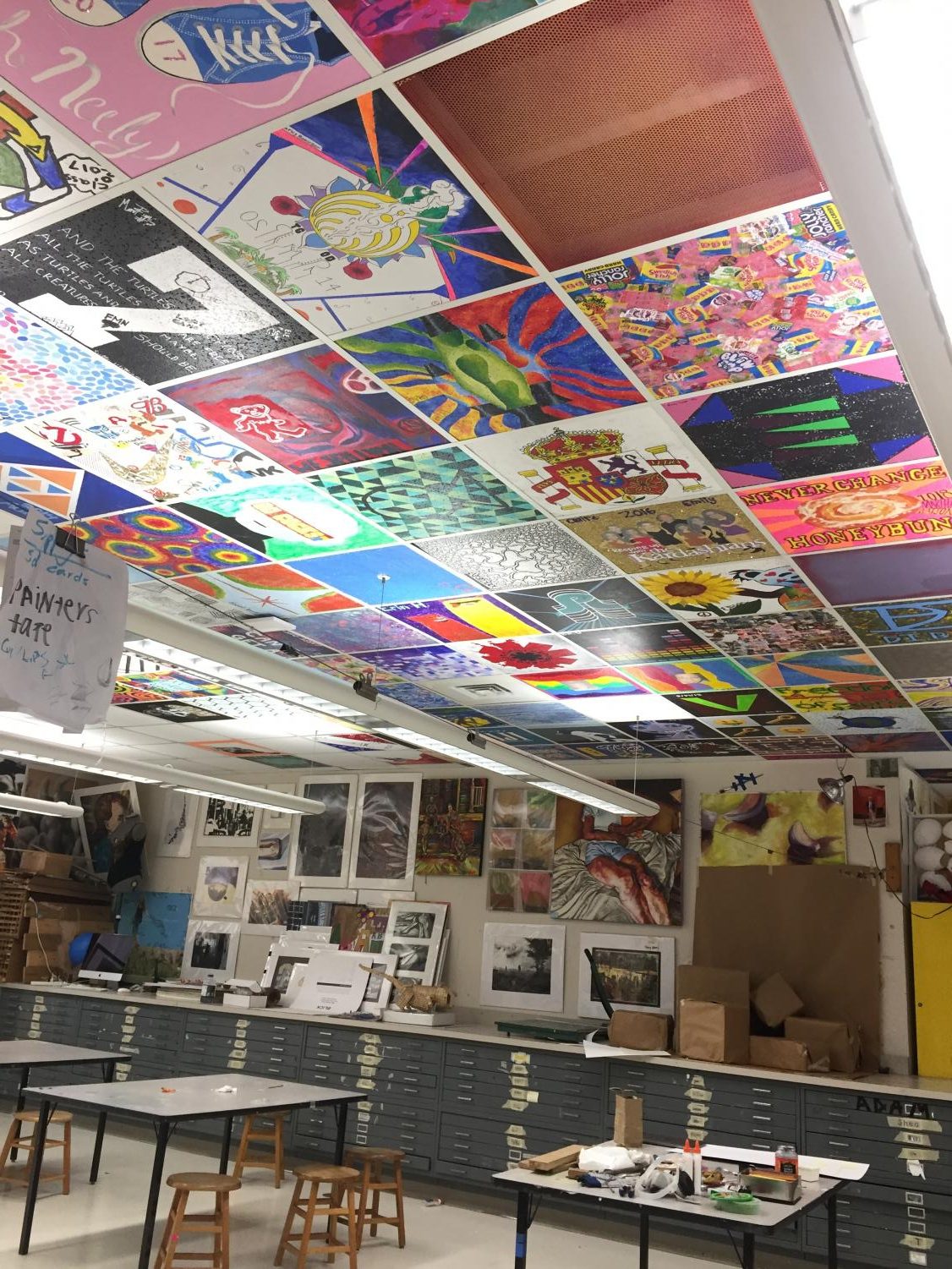
A view of one of Latin’s three upper school art classes.
It is easy to see the joy in the room when entering a Latin art class. Music plays over the speakers and students are scattered around the room working on oil paintings, editing pictures, building sculptors and more. The classroom is covered in artwork from top to bottom. Looking up at the ceiling, tiles are all decorated differently, for any senior who has taken art all four years of high school gets to leave their legacy on the ceiling.
The Charlotte Latin art teachers make it their goal to teach students to create art, but they also make it their goal to give students just enough guidance for them to look at a piece of white paper and come up with an elaborate creation from their imagination. Richard Fletcher, a 28-year art teacher at Latin, shared that art is more than just an outlet for students interested in painting or sculpting. “We don’t expect many of our kids to go off and become working artists, but what we give them is the ability to participate in any type of job where you have to come up with a plan and execute it. That’s a skill that you’ll need for the rest of your life.”
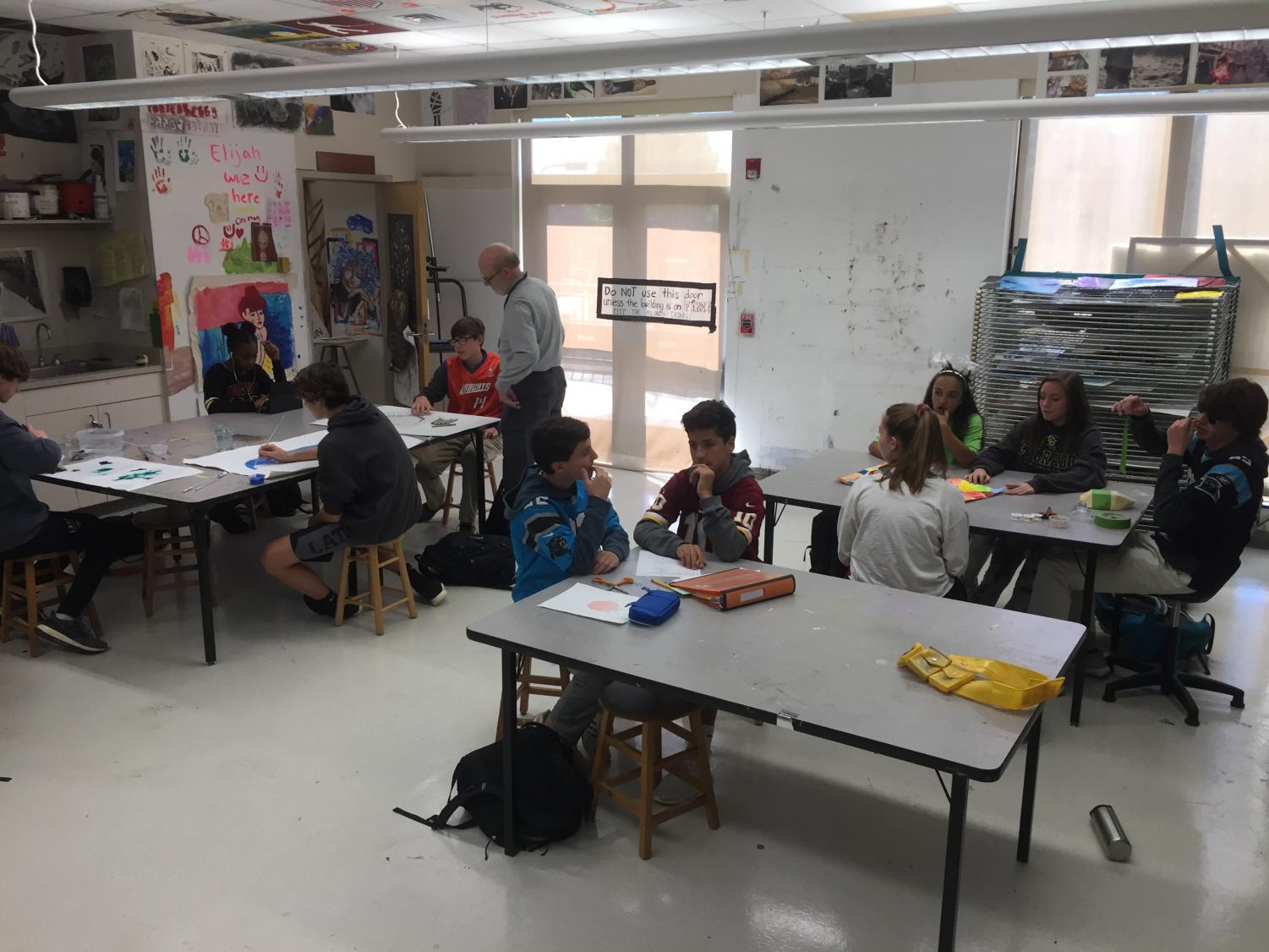
A freshman art class hard at work on their many different projects. Taught by Mr. Martin.
Around the country, many art programs are losing enrollment, and many are getting cut from curricula all together. Charlotte Latin is putting more emphasis on the importance of visual arts. Fletcher said, “I think that the school lets us do what we do, and they see value in the system that we put in place in giving the kids freedom. We have a lot of support and I think it shows how Latin is heavily invested in creativity and that’s amazing in today’s society.”
Thomason said the School’s support in allowing the teachers the freedom to find what worked for the students is what made the program successful, “Mr. Martin dreamed the program up and the school supported it, Mr. Fletcher executed it, and then each of us put our own twists on our teaching styles. It’s all about making art accessible to everyone, not just those who specialize in it. Everyone should have the chance to create art,” and that is what makes the Charlotte Latin arts so special.


